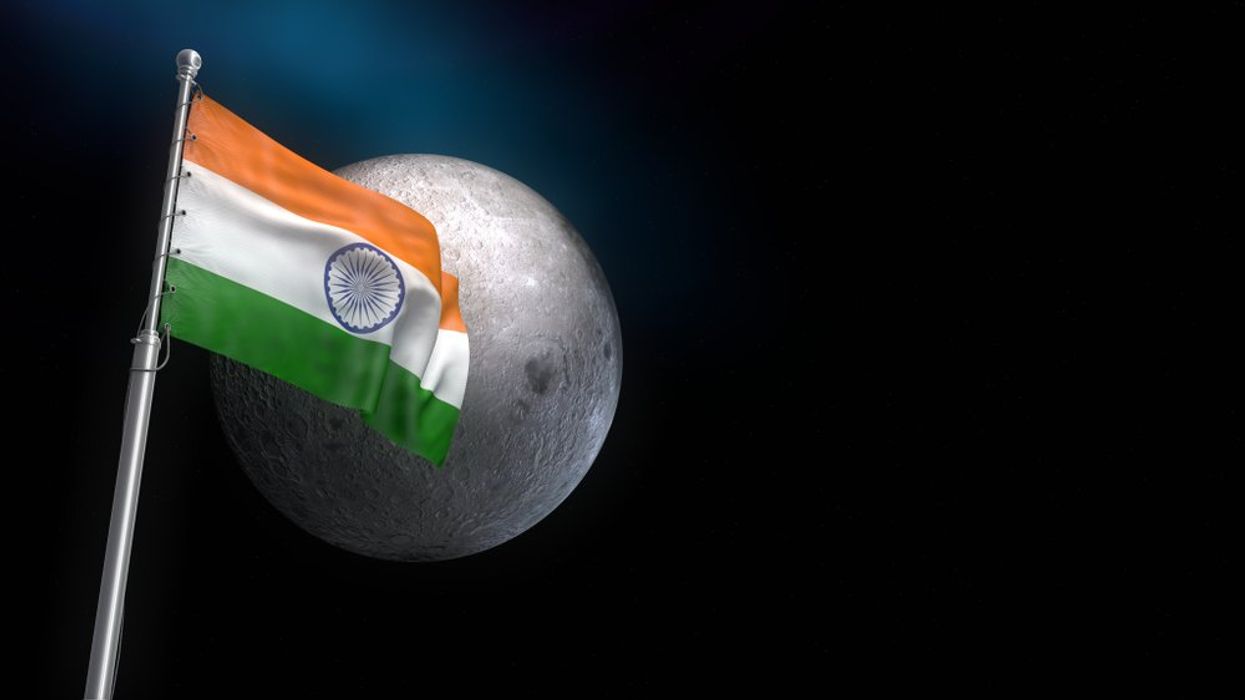Editor's note: Sign up for CNN’s Wonder Theory science newsletter. Explore the universe with news on fascinating discoveries, scientific advancements and more.
(CNN) — After completing a historic landing on the lunar surface, putting India in the tiny club of countries that have safely placed a spacecraft on the moon, the Chandrayaan-3 lander is now asleep — resting through the 14-day lunar night before mission controllers attempt to reawaken the spacecraft later this month.
The primary goals of the mission have now been successfully checked off the list, cementing the Chandrayaan-3 lander’s legacy in exploration history. For nearly two weeks, the lander carried out technology demonstrations and data collection mainly focused on analyzing the composition of the moon’s soil and super-thin atmosphere.
The Chandrayaan-3 spacecraft landed on the lunar surface on August 23. The safe touchdown made India only the fourth nation in the world to complete such a feat, following the former Soviet Union, the United States and China. So far in the 21st Century, only China and India have landed on the moon.
It also marked the first mission to explore so close to the lunar south pole, a region of key scientific and strategic importance for global space powers because it is believed to be home to deposits of water ice. The resource could be harvested and converted into drinking water or even rocket fuel for future missions that explore deeper into the cosmos.
In India, the Chandryaan-3 mission has been hailed as a point of national pride. More than 70 million people watched online coverage of the landing, and thousands more packed into auditoriums and viewing parties across the country.
“Our tireless scientific efforts will continue in order to develop better understanding of the Universe for the welfare of entire humanity,” Indian Prime Minister Narendra Modi posted on social media September 2, celebrating the Chandrayaan-3 mission and the recent launch of India’s first spacecraft dedicated to studying the sun.
The Indian Space Research Organization, or ISRO, confirmed on Monday, September 4, that the Chandryaan-3 lunar lander had been put into sleep mode, as the spacecraft isn’t designed to continue collecting scientific data while its landing spot is in the Earth’s shadow, or lunar night.
But the space agency hopes that the lander — and a small six-wheeled rover it deployed — will be reawakened later this month, on September 22.
A look back at Chandryaan-3
The Chandrayaan-3 landing in August came mere days after Russia failed in its attempt to put a similar spacecraft, Luna-25, near the moon’s south pole. Standing in sharp contrast to the tense failures of Luna-25, the Chandryaan-3 vehicle almost immediately began dispatching updates on its successes.
The day after landing, the ISRO confirmed that the Chandryaan-3 lander had successfully deployed the six-wheeled lunar rover that had ridden to the surface tucked inside the spacecraft’s body.
It was released by rolling down a small ramp before setting off “in pursuit of lunar secrets at the South Pole,” the ISRO said on X, the website formerly known as Twitter.
Together, the lander, which weighs about 1,700 kilograms (3,748 pounds), and the 26-kilogram (57.3-pound) rover are packed with nearly a dozen scientific instruments. They include a laser that can analyze the chemical composition of the moon’s regolith — aiding in the hunt for water ice — and the ultra-thin layer of gases that make up the moon’s exosphere. The rover is also equipped with a seismometer that attempted to detect quakes within the moon’s interior.
The ISRO confirmed that all the instruments were “performing normally” during the mission.
The space agency shared sporadic updates on social media, posting first glimpses at various data points gathered by the lander and rover, which managed to travel a total of more than 100 meters (330 feet) across the lunar surface and was able to snap photos of the lander during its trek.
One experiment measured the temperature of the moon’s topsoil at various depths, and ISRO scientist BHM Darukesha told a local news outlet, PTI, that the surface was hotter than expected.
“We all believed that the temperature could be somewhere around 20 degree centigrade to 30 degrees centigrade (68 to 86 degrees Fahrenheit) on the surface but it is 70 degree centigrade (158 degrees Fahrenheit). This is surprisingly higher than what we had expected,” he said.
The rover also detected some seismic activity using an instrument designed to measure rumbles and quakes beneath the lunar surface, and the rover used a spectroscope to confirm the presence of sulfur near the moon’s south pole. Now scientists will aim to investigate how the element got there and whether it exists naturally on the surface or was put there by a meteor strike or volcanic activity, according to the ISRO.
The ISROput the rover to rest on September 2, though its solar panels were oriented to catch the first sun rays as the moon travels back into daytime later this month.
“Hoping for a successful awakening for another set of assignments! Else, it will forever stay there as India’s lunar ambassador,” the ISRO posted on X.
But the lander wasn’t finished. It completed another stunning feat on September 4, firing up its engines to lift itself about 40 centimeters (16 inches) off the ground and make a small hop to land about 30 to 40 centimeters (12 to 16 inches) away from its original position.
The ISRO emphasized the importance of this technology demonstration, noting that being able to get a lander back off the lunar surface will be essential for future missions that aim to return soil samples — or even astronauts — back home after a lunar mission.
Shortly after, the lander joined the rover, entering its own slumber and awaiting its reawakening when the sunshine returns to its resting place.
It’s not yet certain that the lander and rover will, in fact, properly function when mission controllers attempt to turn them back on later this month.
But all of the primary objectives the ISRO set out for the mission have been met.
The-CNN-Wire
™ & © 2023 Cable News Network, Inc., a Warner Bros. Discovery Company. All rights reserved.


















































